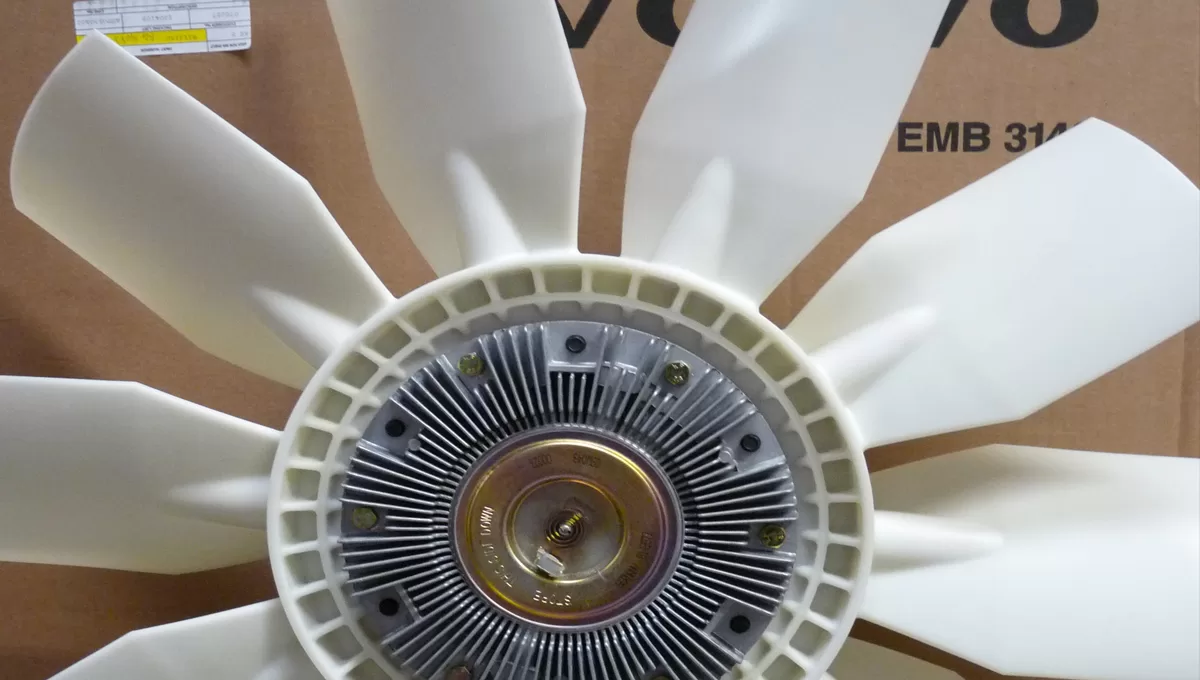How clutch fan works?
Introduction
The clutch fan is an essential component of the engine cooling system in many vehicles. Controlling the cooling fan’s speed assists in maintaining engine temperature regulation. This page will describe the many types of clutch fans, how they operate, and some typical issues that may arise.
Components of a Clutch Fan
The clutch fan consists of two main parts: the fan and the clutch. The fan connects to the engine’s water pump and draws air through the radiator to cool the engine. The clutch, on the other hand, is affixed to the fan and is in charge of managing the fan’s speed.
Working on a Clutch Fan
The clutch fan works by engaging and disengaging the fan at the appropriate times, depending on the engine’s temperature. When the engine is cold or running at a lower temperature, the clutch fan is disengaged, and the fan rotates freely with the hub, providing minimal airflow through the radiator. It helps the engine warm up more quickly and operates at optimal temperatures.
As the engine heats up, the clutch fan gradually engages, and the fan begins to spin faster. As a result of the clutch fan’s gradual engagement design, the fan’s speed can rise in direct proportion to engine temperature.
Clutch Fan & Engine temperature
The clutch fan designs engage gradually, allowing the fan to increase its speed in proportion to the engine’s temperature. As a result of the clutch fan’s gradual engagement design, the fan’s speed can rise in direct proportion to engine temperature. It helps to maintain a consistent engine temperature and prevent overheating.
The clutch fan achieves this through a series of springs and a bimetallic coil. The bimetallic filament is a strip that has been bonded together between two metals. The filament bends because the metals expand at different rates when heated. The clutch fan’s bimetallic coil, which is inside of it, is utilized to engage and disengage the fan.
The bimetallic coil will experience pressure from the springs inside the clutch fan, engaging the clutch. As the engine heats up, the bimetallic coil expands, and the springs inside the clutch fan apply pressure to the filament, which causes the clutch to engage.
How clutch fan works?
Types of Clutch Fans
Clutch fans come in many designs, including non-thermal, thermal, and electrical versions. Older cars frequently have non-thermal clutch fans, which are engine speed-dependent and designed to engage. Modern vehicles are prone to have thermal clutch fans, which intend to activate based on engine temperature. The most sophisticated type of clutch fan is an electronic one that operates in response to a signal from the engine control module (ECM).
Non-Thermal Clutch Fans
The first kind of clutch fan is a non-thermal clutch fan, which operates based on engine speed. These clutch fans use centrifugal force to engage and disengage the fan. The clutch automatically disconnects, and the fan spins freely with the hub when the engine begins at a low velocity. As the engine speed increases, centrifugal force causes the clutch to engage, and the fan starts to spin.
Thermal Clutch Fans
The thermal clutch fan is the most common type used in vehicles. The most prevalent clutch fan discovered in automobiles is the thermal clutch fan. It consists of a bimetallic spring that engages the clutch when the engine temperature increases. As the engine gets hotter, the spring expands and engages the fan clutch, causing the fan to spin faster and provide more cooling. The thermal clutch fan is straightforward and dependable, but it may not react quickly enough to temperature changes and may not offer the precise control required for some applications.
Electronic clutch fan:
The electronic clutch fan uses an electronic control module to engage the clutch based on inputs from various sensors, such as the engine coolant temperature sensor and the air conditioning pressure sensor. The electronic clutch fan is more complex and expensive than the thermal clutch fan, but it can provide better performance and control in certain situations.
Hybrid clutch fan:
The hybrid clutch fan incorporates elements of both the thermal and electronic clutch fan. It uses a bimetallic spring in conjunction with an electronic control module. This type of fan provides a good balance between simplicity and performance and is becoming increasingly popular in modern vehicles.
There are varieties of clutch fans available, each with its specific characteristics and advantages, and they are crucial parts of engine cooling systems. The choice of which type of clutch fan to use depends on the needs and requirements of the vehicle or application.
READ MORE :
- All About Aston Martin Cars
- Audi e tron Review
- Bently Continental GT price in India
- BMW X1 Price in India
- Brezza 2022 Launch date in India
- Why Bugatti Is So Expensive?
- Best car dealers in Dubai
- Concorde Motors Kochi
- Honda Showroom Kochi
- Indus Motors Thevara
- KIA DEALERS IN PUNE
- Lamborgini Showroom in India
- Nippon Toyota Kalamassery
- Rolls Royce Showroom in India
- Sai Service Pathadipalam
- Top 10 Car Showrooms Kottayam,
- Top 5 Car Showrooms Trivandrum
- BREZZA 2022 vs TATA NEXON
- Citroen C3 price in India
